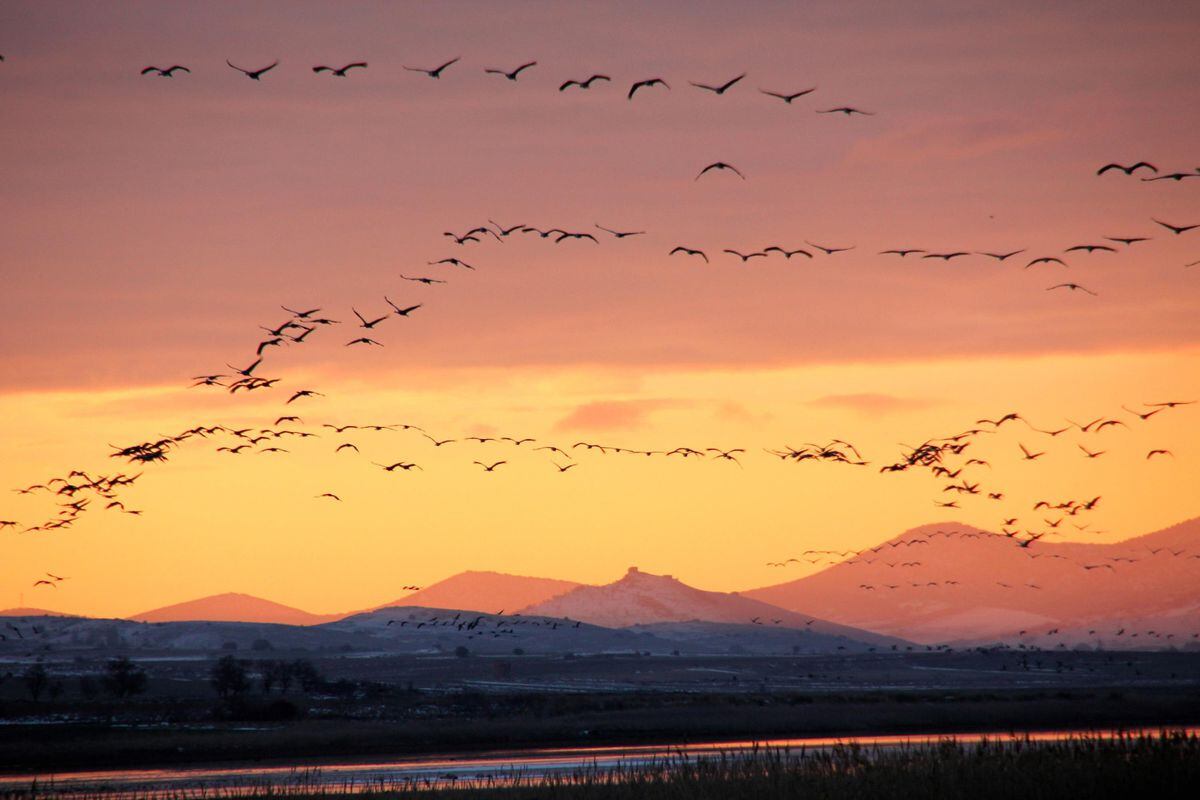A new edition of the Living Planet report is presented again this Thursday, the evaluation of the state of biodiversity that every two years - since 1998 - carried out by the WWF organization and the Zoological Society of London.
The conclusion of this work is that in nearly half a century there has been an average decrease of 69% in the populations of mammals, birds, reptiles, amphibians and fish on the planet.
This is alarming data, but it must be well explained, since it does not refer to the global count of these animals in the world, but rather it is an indicator made from the analyzed populations.
In the case, for example, of the pink dolphin, a marine mammal in danger of extinction, as detailed by Luis Germán Naranjo, conservation director of WWF Colombia, there are different populations (groups of the same species) in the Amazon and Orinoco, but the calculations of the Living Planet report have been made from the data of only one of them studied in Brazil.
"This population has decreased by 65% compared to the baseline [1970], but that does not mean that the entire species of pink dolphin has decreased by 65%," says the Colombian.
Similarly, the conclusion of the Living Planet report is not that from 1970 to 2018 (the last year analyzed) the abundance of all mammals, birds, reptiles, amphibians and fish on the planet has decreased by 69%.
This percentage refers to the 31,821 studied populations of 5,230 species monitored around the globe, a great research effort that really represents a small taste of the enormity of biodiversity as a whole, since there are about 11,000 different species in the world of birds alone and there are still many more amphibians.
In addition, this percentage is an average of the evolution of all these very different animal populations, some of which have improved and others have worsened.
All in all, for WWF the numbers from this sampling of wildlife populations around the world are strong enough to show that "we are experiencing a planetary emergency" and that "transformative actions by governments, companies and individuals are urgently required to reverse the situation".
According to Enrique Segovia, conservation director of WWF Spain, the Living Planet Index does not evaluate the global abundance of vertebrates in the world, but it is useful as an indicator of the health of ecosystems.
“This serves to see trends”, comments Segovia, “it is telling us that biodiversity continues to fall and that there are populations that are declining on average much faster than others”.
At this point, the 2022 Living Planet report points out, for example, that freshwater populations are the ones that show the greatest decrease, 83%, of those studied in the world as a whole.
This refers to the vertebrates analyzed (mammals, birds, reptiles, amphibians and fish), which does not include the gigantic world of insects.
Likewise, the work also affects the significant reduction in the populations of oceanic sharks and rays analyzed.
Worrying data in Latin America
By region, the report highlights that the reduction of monitored vertebrate populations in Latin America and the Caribbean reaches 94%.
This represents the largest drop recorded in the world, well ahead of Africa (-66%), Asia and the Pacific (-55%), North America (-20%) or Europe and Central Asia (-18%).
“The data from Latin America is very worrying,” says Luis Germán Naranjo from Colombia, who also stresses that this has a lot to do with taking 1970 as the base year of reference. “In the case of Europe and the United States, their populations are already they had reduced a lot in 1970, because then their ecosystems had been much more modified”.
The report indicates that the main causes of wildlife population decline are habitat degradation and loss, overexploitation of species, introduction of invasive species, pollution, climate change and disease.
Despite the fact that several decades have passed since the implementation of the first policies to stop the biodiversity crisis, the truth is that edition after edition of this Living Planet report, the trend of the analyzed populations does not stop falling.
To put a stop to this worrying decline, the WWF organization calls for an international biodiversity treaty similar to the Paris Agreement against climate change to reverse the loss of biological diversity.
If to stop global warming the goal is to reach net zero emissions by 2050, environmentalists are calling for a pact so that by 2030 not only has the loss of biodiversity stopped, but a positive balance has been achieved.
"World leaders will meet at the 15th Conference of the Parties to the Convention on Biological Diversity (CBD COP15) this December, a once-in-a-decade opportunity to correct course for the benefit of people and the planet," says WWF, which The international community asks “to ensure a positive nature by 2030, that is, that at the end of this decade there will be more nature than at the beginning”.
You can follow CLIMA Y MEDIO AMBIENTE on
and
, or sign up here to receive
our weekly newsletter



/cloudfront-eu-central-1.images.arcpublishing.com/prisa/5FP2BFK47VGTTKRWD3G42LNWPU.jpg)

/cloudfront-eu-central-1.images.arcpublishing.com/prisa/6BTHUDPEMVESRITAHZQQF4WVF4.jpg)
/cloudfront-eu-central-1.images.arcpublishing.com/prisa/6TTJYV7DWNCTZMK543DWM7M5R4.jpg)


/cloudfront-eu-central-1.images.arcpublishing.com/prisa/Y2JWUSXPBJDSHCI3OF3KQ7Z24I.jpg)